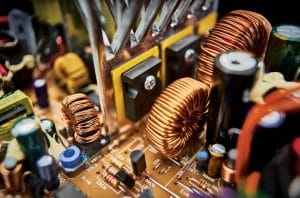 All electronic devices and circuits generate heat, and require thermal management to improve reliability and prevent premature failure. The amount of heat given out is proportionate to the power input, if there are no other energy interactions.
All electronic devices and circuits generate heat, and require thermal management to improve reliability and prevent premature failure. The amount of heat given out is proportionate to the power input, if there are no other energy interactions.
By Baishakhi Dutta
There are several techniques for cooling electronic devices, which include various types of heat-sinks, thermoelectric coolers, forced air systems and fans, heat pipes, and others. In case of extremely low environment temperatures, it may actually be necessary to heat the electronic components in these devices to achieve satisfactory operation.
Today, thermal management products offer solutions for greater efficiency in the green energy domain. These include photovoltaic inverters, which are known to be particularly sensitive to temperature; connections between the heat-pipe and water storage tank for solar-heating applications; hydrogen fuel cells; and wind power generators, apart from many others. Product miniaturisation, coupled with higher powered devices, has made efficient thermal management an essential part of electronics design.
Few products available in the market
- Thermally conductive adhesives and greases
- Thermally conductive interface pads, bonding products and epoxy resins
- Silicone and non-silicone heat transfer compounds
- Gap-fillers
- Heat pipes and sinks
- Wind tunnels
- Flow meters
- Chillers and cold plates
Various options to choose from
Thermal management solutions are an integral part of any product that is manufactured in the electronics industry. A finished electronic product, which will be used to its maximum potential on a regular basis, requires a thermal management solution. Too much heat being generated inside an electronic device while in use can degrade it, and can even cause deterioration and malfunctioning in the course of time. Thermal interface materials can be in the form of pastes, bonding materials/adhesives or thermally conductive pads.
The non-curing pastes, ideal for applications where rework may be required, use different base oils to provide a range of desirable properties, such as the wide operating temperature range offered by silicone based products. Recent improvements in non-silicone technologies have led to the introduction of products with significantly reduced oil bleed and evaporation weight-loss values, while increasing the thermal conductivity properties.
Checklist prior to making a purchase decision
- Look for features that fit your needs best
- Experiment before you purchase
- Ascertain the lifetime of the product
- Check if the solution will ease manufacturing
- Look for accuracy
- Check the cost-effectiveness
- Ensure ease of servicing
Latest trends
The rapid development of faster, cheaper and more powerful computing has led to some of the most important technology and societal advances in modern history. However, the enhanced computing capabilities at the device and die levels have also created a very challenging set of circumstances with regard to keeping electronic devices cool—a critical factor in determining their speed, efficiency and reliability. With advances in nano-electronics and the emergence of new application areas such as three-dimensional chip stack architectures and flexible electronics, now more than ever before, there is a need for novel materials to help address some of the pressing thermal management challenges.
Choosing the right solution
Deciding upon the right thermal management solutions for one’s business is a tough call. After all, it is not just about choosing one from a plethora of options, but is a decision that requires detailed analysis of which option best suits the company’s products and the way it may be impacted with better and improved technology in the future. This is why thermal management is an aspect that should be considered right when a product is being conceptualised and designed. This makes the selection process easier. In the early stages of product conceptualisation, a provider of thermal management solutions can also suggest the best options available.
Quick tips
One way of managing the transfer of heat away from electronic devices is to use a thermally conductive encapsulation resin. This product is designed to protect the unit from environmental damage while allowing the heat generated within the device to be dissipated to its surroundings. Encapsulation resins also incorporate the use of thermally conductive fillers; however, the base resin, hardener and other additives used can be altered to provide a wide range of options.
Products launched in this category
Company: Dow Chemicals
Product: TC-4605 HLV thermally conductive encapsulant
This is a two-part, one-to-one gray silicone elastomer, which can be heat cured for manufacturing flexibility. It is a thermally conductive encapsulant/pottant for electronics, providing protection from different environmental conditions and enables efficient thermal management.
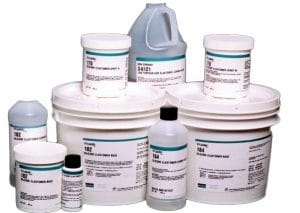 Key features
Key features
- Colour: Grey
- Dielectric strength: 24 kV/mm
- Elongation: 95 per cent
- Thermal conductivity: 1 watt per metre K
- Volume resistivity: 1.08e+015 ohm-centimetres
Contact details: www.in.dow.com
Company: Electrolube
Product: HTC non-silicone heat transfer compound
This is recommended when efficient and reliable thermal coupling of electrical and electronic components is required, or when thermal conductivity or heat dissipation between any surfaces is an important factor. This should be applied to the base and mounting studs of diodes, transistors, thyristors, heat-sinks, silicone rectifiers and semiconductors, thermostats, power resistors and radiators.
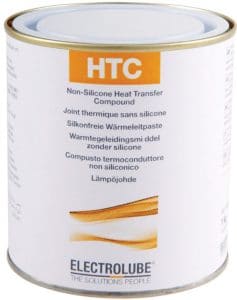 Key features
Key features
- Excellent non-creep characteristics
- Very high thermal conductivity of 0.9 W/m.K
- Wide operating temperature: -50°C to +130°C
- Low evaporation weight loss
- Easy to use and available in aerosol form, HTCA
- Low toxicity
Contact details: www.electrolube.in
Company: Electrolube
Product: TCOR thermally conductive Oxime RTV
This product offers a high degree of thermal conductivity and is suitable for use over a very wide temperature range, making it ideal for a wide variety of uses, particularly in automotive applications.
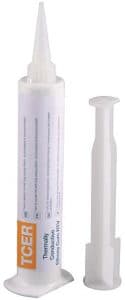 Key features
Key features
- Single part, low odour RTV
- Very high thermal conductivity: 1.80 W/m
- Exceptionally wide operating temperature range: -50°C to +230°C
- Moisture cure – releasing oxime upon cure
- Good bond strength and remains flexible at high temperatures
Contact details: www.electrolube.in
Company: Advanced Thermal Solutions Inc.
Product: Straight fin heat-sinks
Straight fin heat-sinks can be used in many applications where the direction of the airflow is clearly defined. They can be used in areas where the maxiFLOW heat-sink design cannot be used. In such cases the product will provide an excellent alternative for cooling thermally sensitive devices.
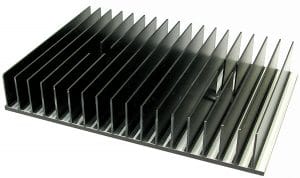 Key features
Key features
- High aspect ratio (straight fin heat-sinks are ideal for compact PCB environments)
- Designed specifically for BGA and other surface mount packages
- Come pre-assembled with high-performance thermal interface material
- Extruded aluminium minimises thermal resistance, reduces weight and keeps costs low
- Also available with maxiGRIP or superGRIP clip attachments
Contact details: www.qats.com




























